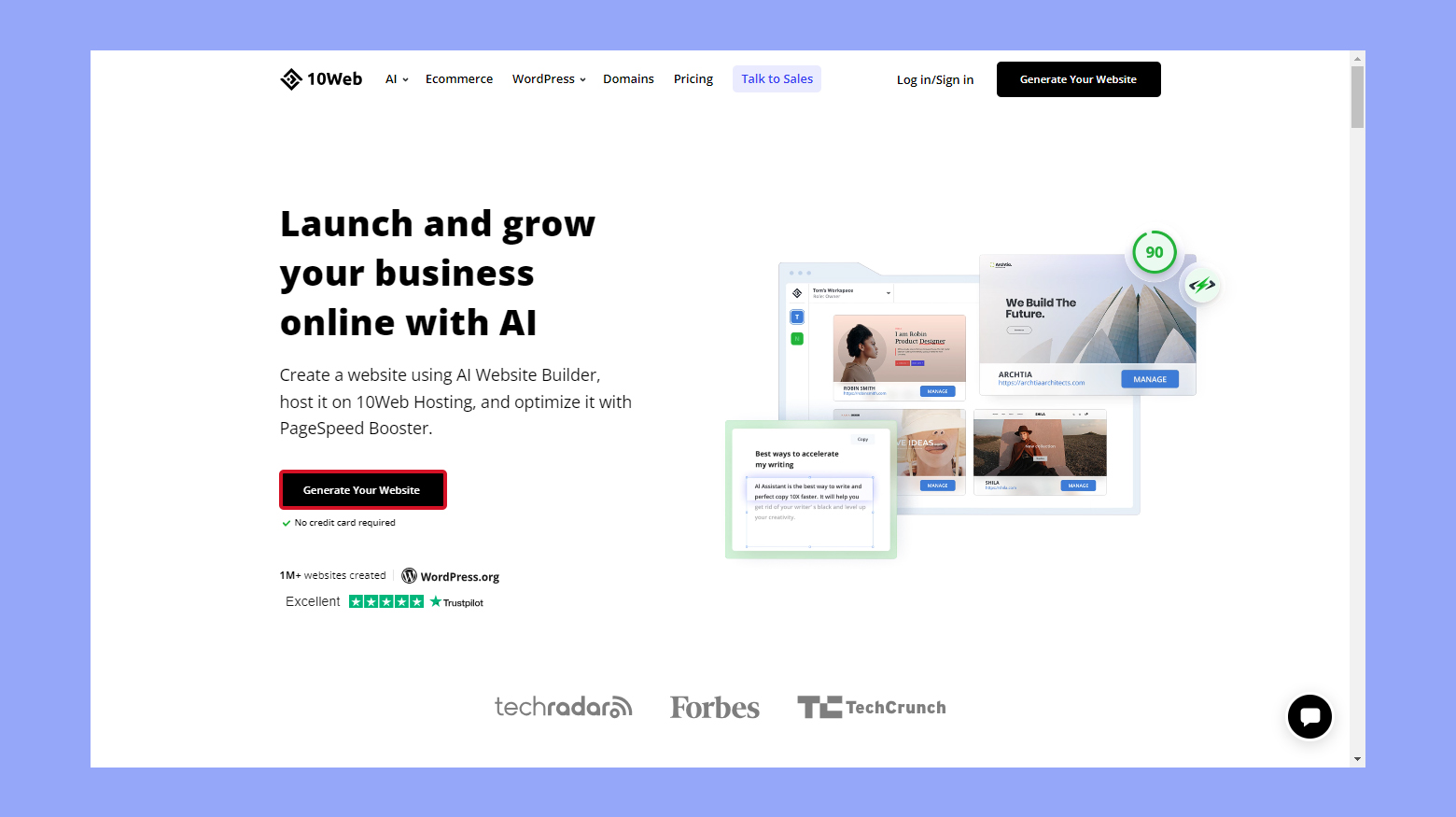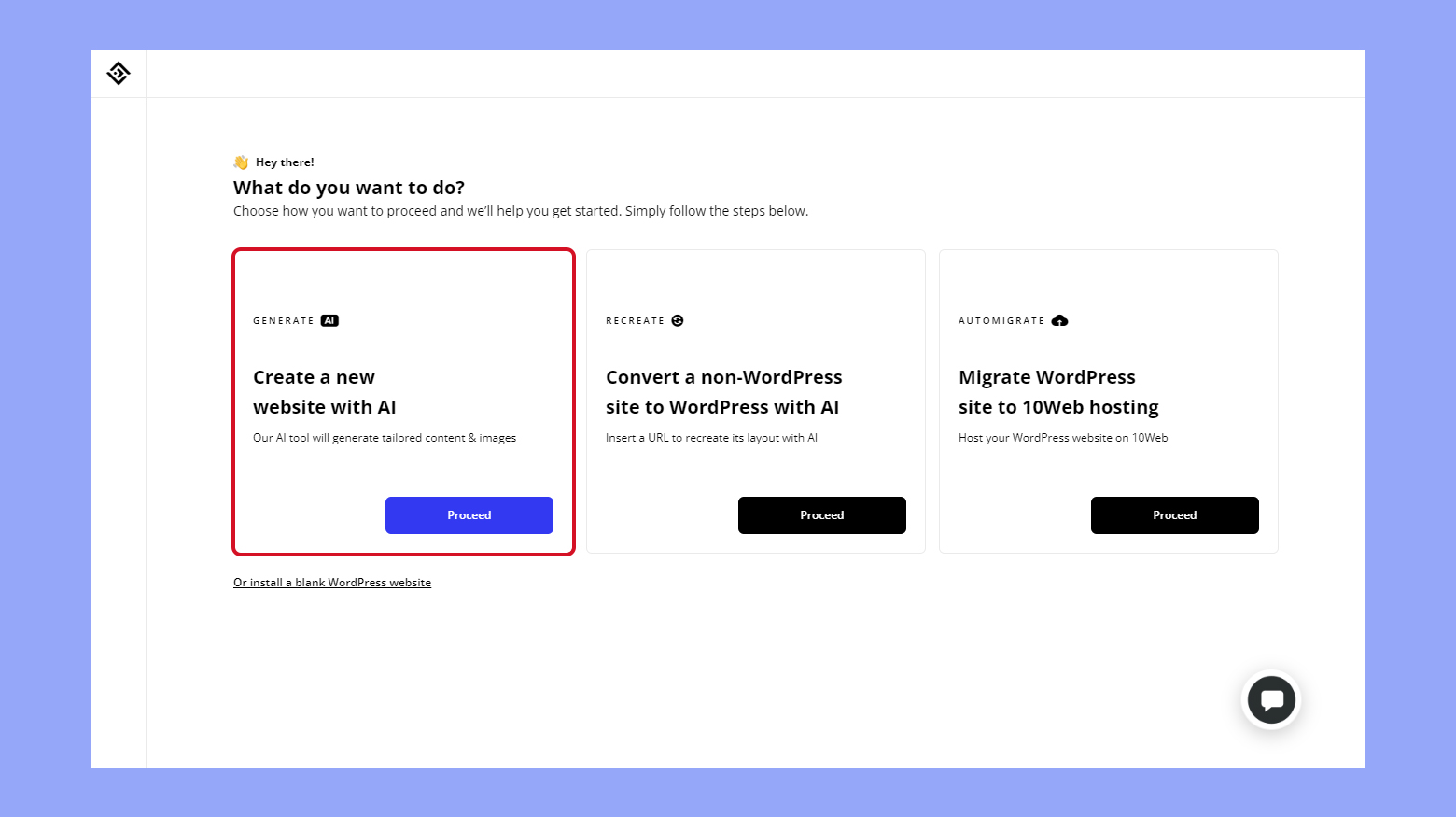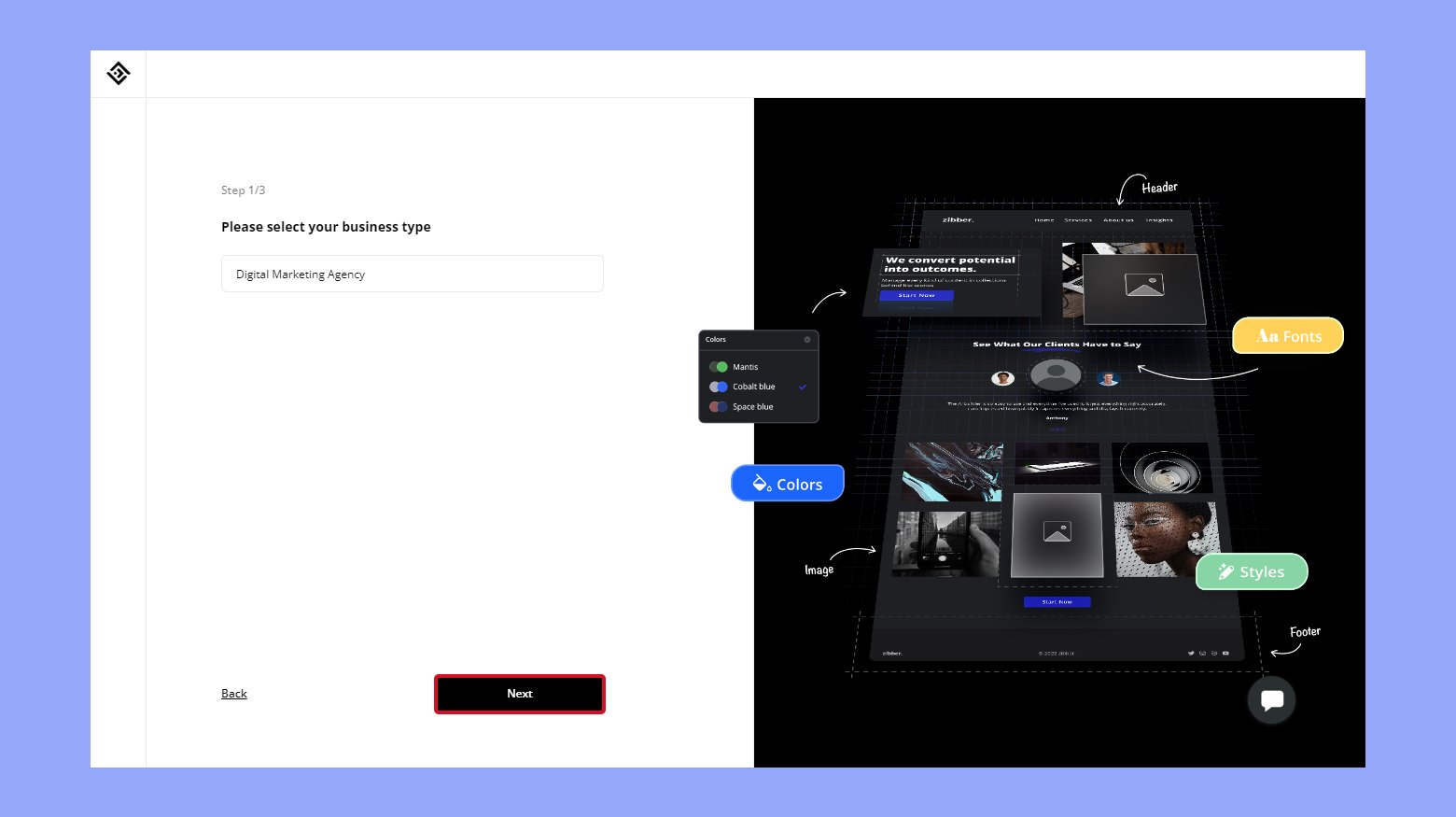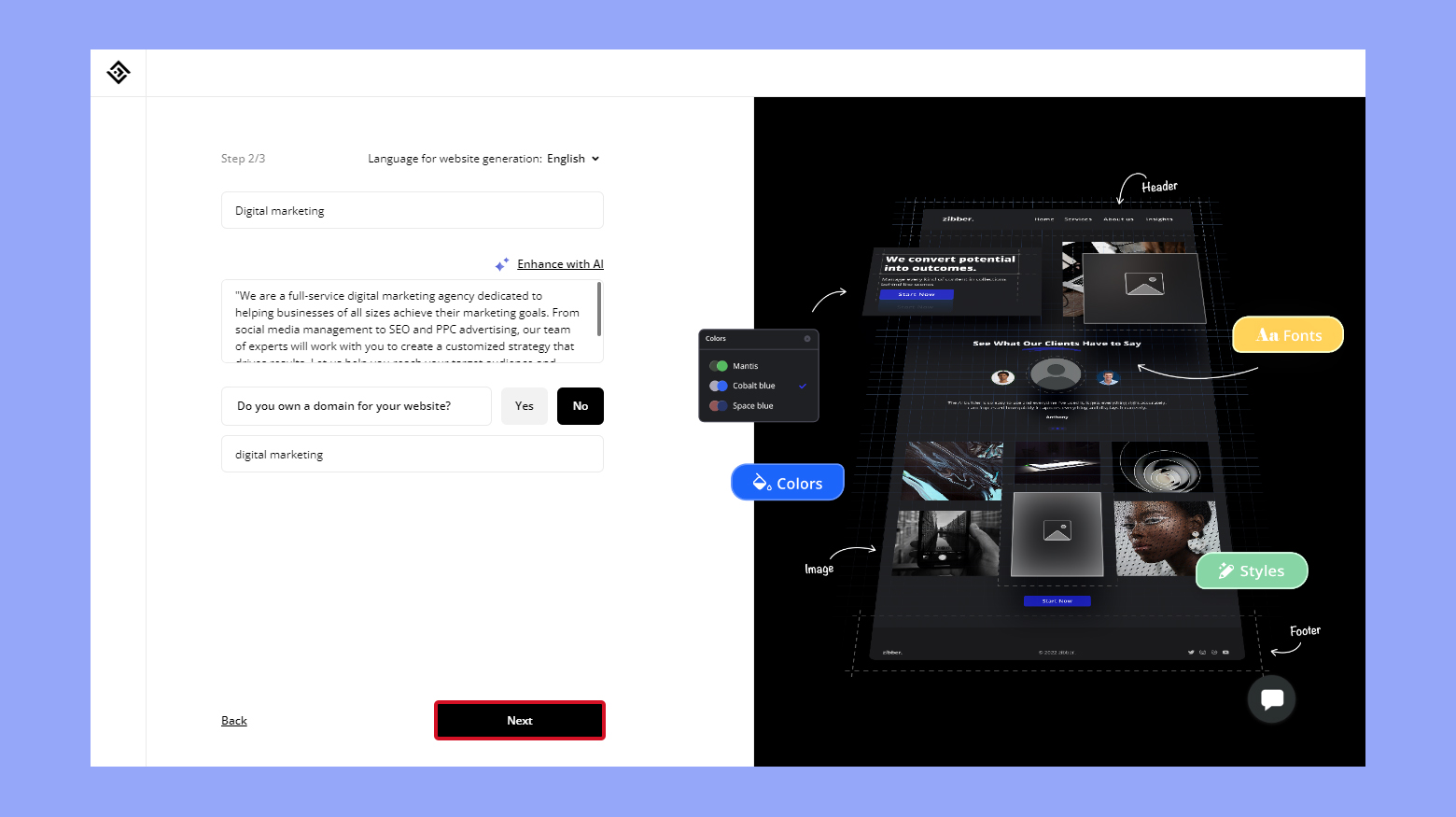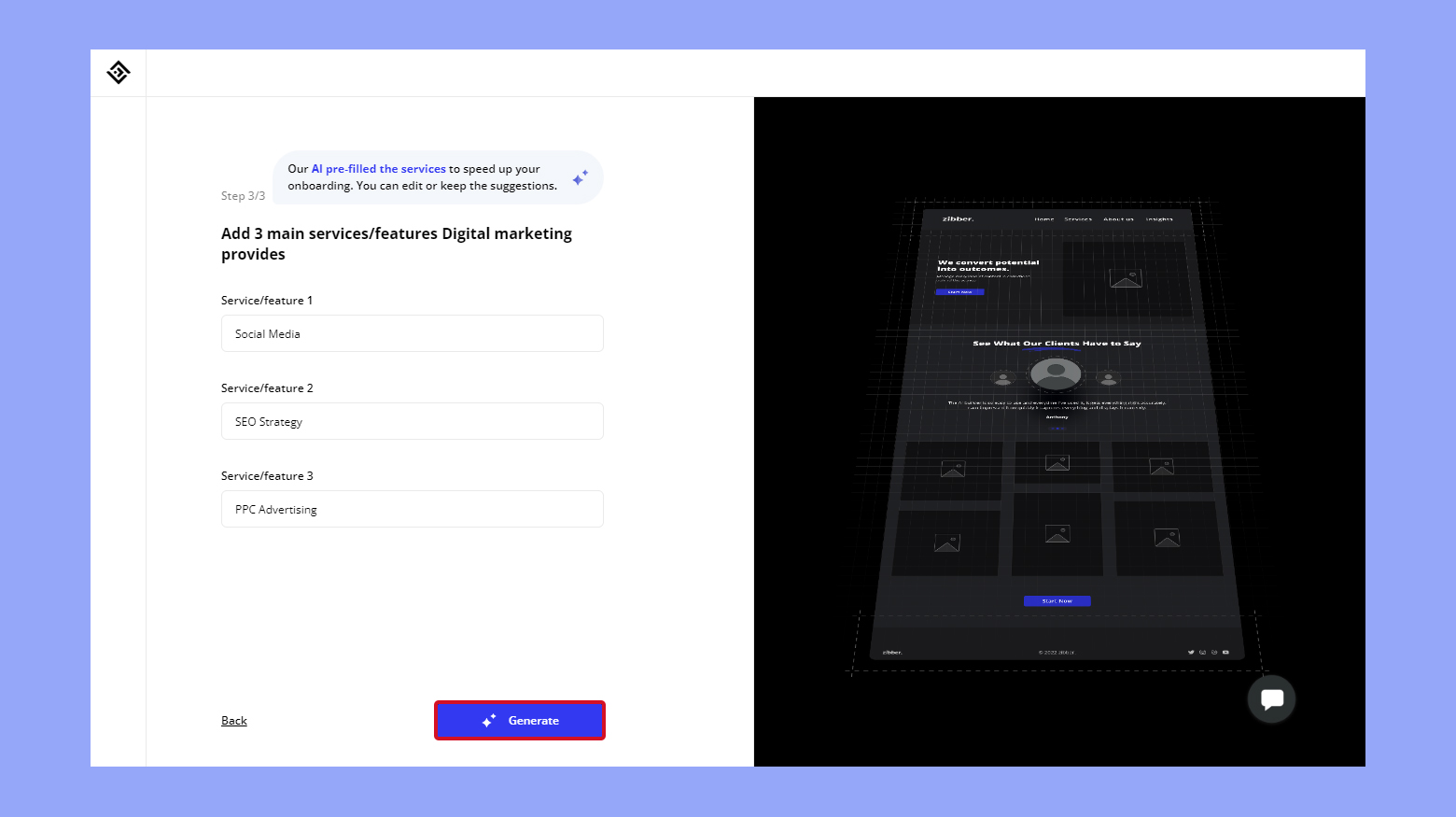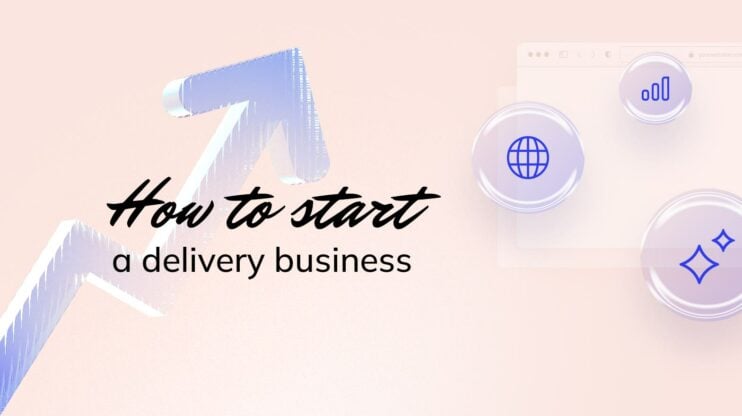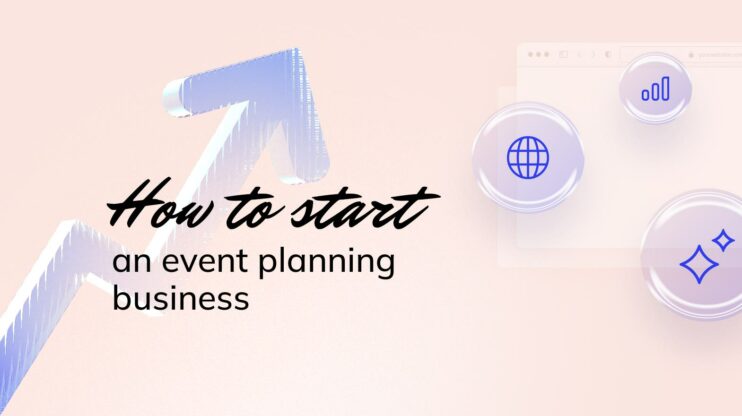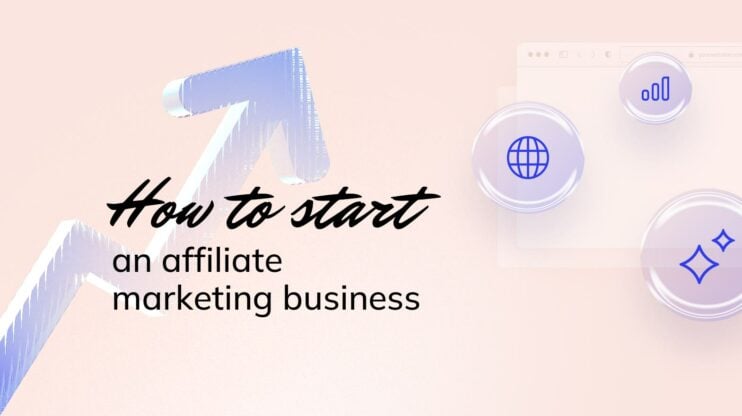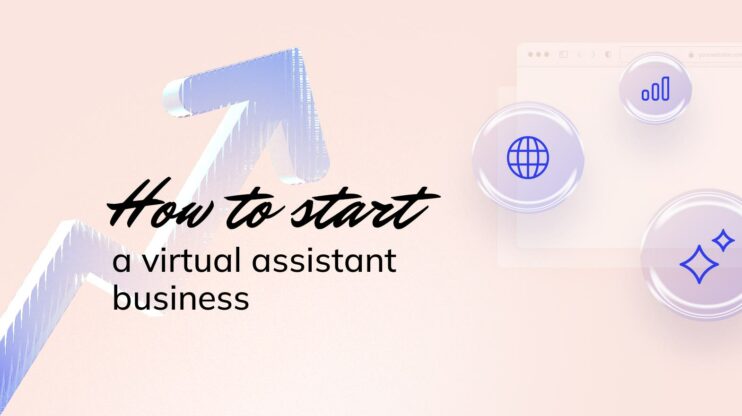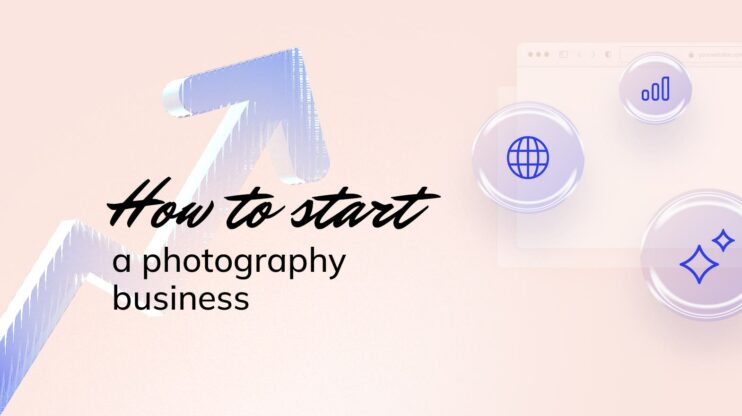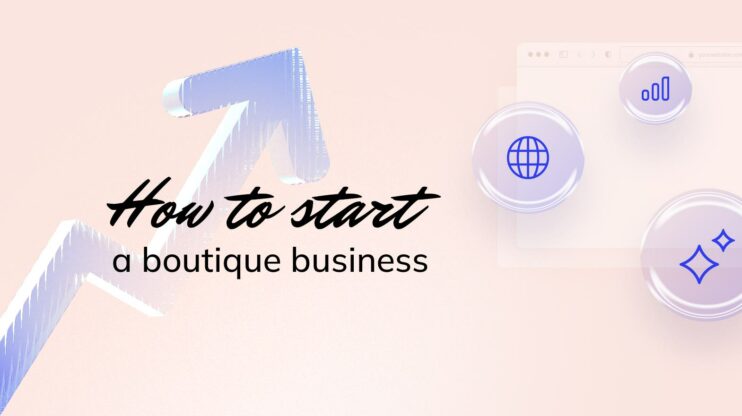Starting a web design business can be both exciting and profitable. This guide outlines essential steps for success, from creating a clear business plan and identifying your niche to handling legal tasks and building an online presence. Focus on offering specialized services, crafting a memorable brand, and utilizing effective marketing strategies to attract clients and grow your business.
FAQ
How much does it cost to start a web design business?
The cost to start a web design business can vary widely depending on several factors, but here is a general breakdown of potential expenses:
Initial setup costs
- Computer and software: $1,000 – $3,000
- Domain name and hosting: $50 – $200 per year
- Office supplies and furniture: $200 – $1,000
- Business registration and legal fees: $100 – $500
- Website development and marketing: $500 – $2,000
Ongoing costs
- Subscription to design tools (e.g., Adobe Creative Cloud)**: $50 – $80 per month
- Internet and utilities: $50 – $150 per month
- Marketing and advertising: $100 – $500 per month
Overall, you might need an initial investment of $2,000 to $10,000 to start a web design business, with ongoing monthly costs ranging from $200 to $800.
How profitable is a web design business?
The profitability of a web design business depends on several factors, including the number of clients, pricing structure, and operating costs. Here are some key points:
Income
- Freelance rates: Web designers can charge $25 to $150 per hour.
- Project-based fees: Typical project fees range from $500 to $10,000, depending on complexity and scope.
Profit margins
- A successful web design business can achieve profit margins of 30% to 60%.
- Monthly revenue can range from $2,000 to $10,000+ for freelancers, and much higher for established agencies.
Client retention and growth
- Retaining clients for ongoing maintenance and updates can provide steady income.
- Scaling the business by hiring additional designers and expanding services can significantly increase profitability.
How do I start a home-based web design business?
Starting a home-based web design business involves acquiring strong web design skills, creating a solid business plan, and setting up a dedicated workspace. Register your business, build a compelling portfolio website, and market your services using online strategies such as SEO, social media, and paid advertising. Networking and providing excellent customer service are crucial for building a reputation and attracting clients. By following these steps, you can establish a successful home-based web design business.
How do I get started as a web designer?
To get started as a web designer, learn the basics of HTML, CSS, JavaScript, and responsive design, and master essential design tools like Adobe Creative Suite, Sketch, and Figma. Build a portfolio showcasing your best work, gain practical experience through small projects or internships, and stay updated with industry trends. Networking and marketing yourself effectively are key to attracting clients. Continuously seeking feedback and improving your skills will help you build a successful career in web design.
Create your custom online store in minutes with 10Web AI Ecommerce Website Builder and take your business online. 
Looking to sell online?
Stage 1: Web design landscape and business planning
Starting a web design business requires understanding the market’s intricacies, identifying your target niche, analyzing your competition, and staying updated with the latest web design trends.
Step 1: Defining your market
To stand out in the web design industry, define a specific niche. Think about what you’re good at and where there’s demand. Common niches include e-commerce websites, portfolio sites for creatives, and business websites. Specializing helps you market your services more effectively and attract clients looking for your expertise.
Step 2: Analyzing the competition
Researching your competition is crucial. Identify competitors in your chosen niche and study their strengths and weaknesses. Check their portfolios, pricing, and client reviews. This analysis helps you understand the market standard and find ways to differentiate your services. Use tools like Google Trends or SEMrush to gather insights.
Step 3: Keeping up with web design trends
Web design is an ever-evolving field. Keep up with trends to offer modern and efficient designs. Follow design blogs, enroll in online courses, and participate in webinars. Current trends might include mobile-first designs, minimalist layouts, and AI integration. Staying informed ensures your services remain relevant and appealing.
Step 4: Creating a business plan
Planning your web design business is crucial for success. Focus on creating a comprehensive business plan and setting clear goals for your operations and growth.
A well-structured business plan will guide your web design business. Follow these steps to create an effective business plan:
- Mission statement: Define what your business aims to achieve.
- Business structure: Decide if you’ll be a sole proprietor, LLC, or corporation.
- Services offered: List the web design services you plan to provide.
- Market analysis: Research your competition and target audience.
- Marketing strategy: Outline how you will attract and retain clients.
- Financial plan: Include start-up costs, pricing, and financial projections.
A clear business plan helps you stay focused on your goals, manage your resources, and attract potential investors.
Setting your business goals
Setting your business goals gives direction and helps measure success. Here’s how to set effective goals:
- Short-term goals: Identify immediate tasks, such as completing your portfolio or building a portfolio website.
- Long-term goals: Plan for future milestones, like expanding your team or reaching a certain revenue target.
- SMART goals: Make sure your goals are Specific, Measurable, Achievable, Relevant, and Time-bound.
- Evaluation: Regularly review and adjust your goals as your business grows.
Clear and achievable goals will keep you motivated and help track your progress.
Step 5: Choosing a business entity
Setting up your web design business involves choosing the right type of business entity, handling taxes properly, and managing your finances effectively.
Selecting a business entity is a crucial step. The choice impacts your taxes, liabilities, and legal protections.
- Sole Proprietorship: Easy to set up and control, but offers no personal liability protection. Your personal assets are at risk if the business runs into trouble.
- Limited Liability Company (LLC): Provides personal liability protection without the complex structure of a corporation. It’s a popular choice for small businesses.
- Corporation: Offers strong liability protection and potential tax benefits, but involves more regulations and costs. Suitable for larger companies or those seeking investors.
- Partnership: Good for businesses run by multiple people. Each partner shares responsibility and profit, but personal liability can be a downside.
Step 6: Handling taxes and accounting
Proper tax management and accounting keep your business compliant and financially healthy.
- Register for an EIN: An Employer Identification Number (EIN) is required for all types of business entities except sole proprietorships without employees.
- Open a business bank account: Keeping your business finances separate from your personal accounts is crucial. It simplifies accounting and shields your personal assets.
- Use accounting software: Tools like QuickBooks or FreshBooks can help you track income, expenses, and prepare for tax season.
- Hire an accountant: If tax laws are overwhelming, consider hiring a professional. They can provide valuable advice and ensure accurate filings.
- Understand your tax obligations: Different entities have different tax requirements. For example, LLCs and sole proprietorships often file taxes on the owner’s tax return, while corporations file separately.
Button up your legal and financial aspects early on to pave the way for a successful web design business.
Step 7: Setting up your operational backbone
Getting your web design business operational involves selecting the right tools and creating an efficient workflow. Both elements are vital for your success and day-to-day operations.
Choosing the right set of tools is crucial for your web design business. The essentials include a robust Content Management System (CMS) like WordPress or Divi. These platforms make designing and managing websites more straightforward.
You’ll also need web design software such as Adobe XD, Sketch, or Figma. These tools help you create mockups and prototypes efficiently. For coding, consider text editors like Sublime Text or Visual Studio Code.
Project management software is also important. Tools like Trello, Asana, and Jira keep your tasks and deadlines organized. They are useful for managing multiple clients and projects simultaneously.
Make sure you have reliable hosting services and domain registrars to manage your clients’ websites. Look into cloud storage solutions like Google Drive or Dropbox for easy access to your files from anywhere.
Step 8: Formulating your workflow
A well-structured workflow ensures that you handle tasks systematically. Start by defining your project stages: Discovery, Design, Development, Testing, and Launch.
In the Discovery phase, gather all client requirements and set clear expectations. This might involve meetings, questionnaires, or initial mockups.
Next, move to the Design stage. Use your chosen tools to create wireframes and designs based on the client’s needs. Regular client feedback at this stage can prevent costly revisions later.
The Development phase involves turning designs into functional websites. Use a CMS like WordPress to build the site, adding necessary plugins and custom code.
Testing is critical before launching the site. Check for bugs, responsiveness, and compatibility across different browsers and devices.
Lastly, in the Launch phase, ensure a smooth rollout by monitoring the new site closely for any issues and making necessary tweaks.
Establish clear procedures for client communication and project updates throughout these stages. This keeps clients informed and ensures smoother project completion.
Create your custom online store in minutes with 10Web AI Ecommerce Website Builder and take your business online. 
Looking to sell online?
Stage 2: Developing your brand
Creating a strong brand is essential to stand out in the crowded web design industry. You’ll want to focus on building a clear brand identity and establishing your online presence to attract clients.
Stage 1: Creating your brand identity
Your brand identity is what sets you apart from other web design businesses. Start by choosing a unique name and logo that reflect your values and style. Think about the emotions and ideas you want to convey with your brand.
Next, decide on your color scheme and typography. These elements should be consistent across all of your materials, including your website, business cards, and social media profiles. Consistency helps build recognition and trust with your audience.
Consider your brand’s voice and messaging. Are you professional, creative, or tech-savvy? Use this voice in your content to create a cohesive experience for your clients. Make sure your brand statement clearly communicates what you offer and why potential clients should choose you.
Step 2: Creating a professional website
Your online presence is crucial for attracting and retaining clients. Start by setting up a professional business website. Choose a domain name that represents your brand and is easy to remember.
Your website should showcase your portfolio, list your services, and provide contact information. Include client testimonials to build credibility. Use high-quality images and clear, concise text to highlight your work and skills.
Optimize your website for search engines by including relevant keywords in your content. This will help potential clients find you more easily. Regularly update your site with new projects and blog posts to keep it active and engaging. Lastly, maintain a presence on social media platforms relevant to your audience. Share updates, interact with followers, and use hashtags to reach a broader audience. Consistent online activity can drive traffic to your site and expand your client base.
Creating a professional website with 10Web
10Web offers comprehensive WordPress website creation services, featuring Automated Managed WordPress Hosting automated updates, security, and backups. The 10Web AI Website Builder includes a drag-and-drop editor and a variety of customizable, responsive templates. The AI-powered builder assists in creating sites based on user preferences, automating content and design.
10Web ensures performance optimization with tools like the Page Speed Booster for faster loading and image compression.
To create your site on 10Web:
- Go to 10Web.io and click on Generate your website

- From the options, choose Create a new website with AI

- Select your business type

- Fill in the name of your business and a short description. You can enhance the description using AI.
- Choose Yes to get a domain or click No if you have one already then enter your domain name if you have chosen No (optional).
- Click Next

- Set the 3 main features, benefits, services offered by your business
- Click Generate to create your website

Step 3: Building a portfolio
Creating a strong portfolio is essential for showcasing your skills and drawing attention from potential clients. A well-crafted portfolio highlights your expertise and successful projects, making it easier for clients to trust your abilities.
Start by focusing on your specific skills as a web designer. This might include HTML/CSS, JavaScript, graphic design, or UX/UI design. Use a clear list to display these skills prominently.
Create sections that detail your proficiency and any certifications or notable achievements. Including testimonials from satisfied clients can add credibility and show potential customers that you can deliver quality work.
Provide examples of how you have applied these skills in real projects. This concrete evidence of your capabilities will help build trust and demonstrate your knowledge.
Create your custom online store in minutes with 10Web AI Ecommerce Website Builder and take your business online. 
Looking to sell online?
Step 4: Showcasing successful projects
Showcasing successful projects is a critical part of your portfolio. Choose a variety of projects that reflect different aspects of your skills. Include a brief description of each project, the client’s requirements, and how you met those needs.
Highlight notable outcomes, such as increased web traffic, improved user experience, or higher conversion rates. Visual elements like screenshots, design mockups, and live links to finished websites will make this section stand out.
Consider adding a case study for one or two key projects. Explain the project goals, your approach, the solutions you implemented, and the results. This detailed focus can demonstrate your problem-solving skills and thorough approach.
Setting the right price for your web design services is crucial for your business success. It’s important to determine competitive rates and choose a payment structure that aligns with your clients’ needs and your business goals.
Step 5: Determining your rates
Setting the right price for your web design services is crucial for your business success. It’s important to determine competitive rates and choose a payment structure that aligns with your clients’ needs and your business goals.
To determine your rates, start by researching the market rates for web design services in your area. Look at what other designers with similar skills and experience are charging. Take into account your level of expertise—new designers may start with lower rates to attract clients, while experienced designers can charge premium rates.
Consider using a tiered pricing model. For example, offer basic, standard, and premium packages. This allows you to cater to clients with different budgets and project scope needs. You can also set hourly rates for smaller tasks or use project-based pricing for larger projects.
Remember to factor in your expenses, such as software, equipment, and marketing costs, to ensure your rates cover your business needs and provide a profit.
Step 6: Structuring your payment options
When structuring your payment options, flexibility is key. Offering various payment models can help attract a wider range of clients.
Hourly rate: Charge based on the number of hours worked. This is suitable for smaller projects or ongoing maintenance.
Flat fee: Set a fixed price for a project, regardless of the time it takes. This can be appealing to clients who prefer knowing their total cost upfront.
Monthly fee: For ongoing projects or services like website maintenance, consider charging a monthly retainer. This provides a steady income and ensures long-term client relationships.
Use clear and concise contracts to outline your payment terms. Include details like deposit requirements, payment schedules, and policies for late payments. This clarity helps avoid misunderstandings and ensures you get paid on time.
Stage 3: Marketing and sales strategies
Marketing and sales are essential for growing your web design business. Effective use of social media and search engine optimization (SEO) can attract new clients and increase visibility.
Step 1: Using social media
Social media platforms like LinkedIn and Instagram are powerful tools for promoting your web design business. Start by creating professional profiles and regularly posting engaging content related to web design.
Use LinkedIn to connect with potential clients and share industry insights. Join relevant groups and participate in discussions to showcase your expertise. Post case studies of past projects to demonstrate your skills.
On Instagram, share visually appealing designs and behind-the-scenes shots of your work process. Use popular hashtags in the web design niche to increase your posts’ reach. Collaborate with influencers or other businesses to expand your audience.
Interact with followers by responding to comments and messages. Running social media ads can also drive traffic to your website, increasing the chances of converting visitors into clients.
Step 2: Optimizing for search engines
SEO is crucial for ensuring potential clients can find your web design business when they search online. Start by conducting keyword research to identify terms potential clients might use to find web design services.
Incorporate these keywords naturally into your website’s content, including headings, meta descriptions, and image alt text. Create high-quality blog posts that address common questions or issues in web design. This not only helps with SEO but also establishes you as an authority in your field.
Make sure your website loads quickly and is mobile-friendly, as these factors affect search engine rankings. Building backlinks from reputable websites can also improve your SEO. Reach out to industry blogs for guest posting opportunities or collaborate on joint content to achieve this.
Regularly monitor your website’s performance using tools like Google Analytics. Adjust your strategy based on the data to continuously improve your search engine rankings.
Create your custom online store in minutes with 10Web AI Ecommerce Website Builder and take your business online. 
Looking to sell online?
Engaging with clients
Building strong relationships with clients is key to your web design business’s success. Effective communication and excellent customer service are essential.
Establishing effective communication
Effective communication with clients ensures clear project goals and expectations. Start by listening actively to their needs and vision for the website. Use clear and simple language to avoid misunderstandings.
Utilize tools like email, video calls, and project management software to stay connected. Regular updates and check-ins keep clients informed and involved, fostering a sense of collaboration.
Additionally, create detailed proposals and agreements outlining the project’s scope, timeline, and cost. This prevents confusion and helps manage expectations.
Maintaining customer service and support
Good customer service sets you apart. Respond promptly to client inquiries and provide solutions to problems that arise during the design process.
Offer ongoing support after the project is completed. This could include maintenance services and troubleshooting. Show your clients that you are reliable and there for them, which builds trust and encourages positive referrals.
Stay professional in all interactions and handle feedback constructively. Satisfied clients are more likely to become repeat customers and refer you to others.
Growing Your Business
To grow your web design business, focus on networking and community engagement and explore various expansion opportunities. Building strong relationships and seeking out new growth avenues can take your business to the next level.
Networking and community engagement
Networking is key to building your brand and gaining new clients. Attend local business events, workshops, and seminars. Meetups and online forums are excellent places to connect with other professionals. Engage with your community by offering free workshops or webinars to showcase your expertise.
Social media can be a powerful tool for networking. Join relevant groups on platforms like LinkedIn, Facebook, and Reddit. Share tips, engage in discussions, and offer solutions to problems. This not only builds your reputation but can also lead to referrals.
Consider forming partnerships with other small businesses or freelancers. Collaborations can lead to new projects and clients. Don’t hesitate to seek out a mentor who can provide guidance and advice based on their own experiences.
Exploring expansion opportunities
Identifying expansion opportunities is crucial for growth. Evaluate your current services and consider adding complementary ones, such as SEO, content creation, or graphic design. This can attract a broader client base and meet more of your clients’ needs.
Expanding geographically is another growth strategy. If your business is thriving locally, think about offering your services in other cities or even countries. Remote work has made this more feasible than ever.
Invest in technology and tools that increase efficiency. Automation software, project management tools, and advanced design software can save time and improve the quality of your work. Set clear goals for growth and monitor your progress regularly to ensure you are on track.
Conclusion
This guide has covered essential steps to help you start and grow a successful web design business. We’ve emphasized the importance of creating a solid business plan, which will serve as your roadmap. Effective marketing strategies, like utilizing social media and SEO, will help you attract clients and grow your brand.
Clear communication with clients is crucial for building strong relationships and ensuring project success. Establishing a professional online presence and showcasing your portfolio will demonstrate your skills and attract potential clients. Offering flexible payment options can cater to different client needs and help secure more business.
These steps will not only help you establish a strong foundation but also pave the way for your web design business to thrive in a competitive market.


